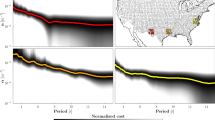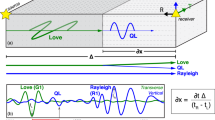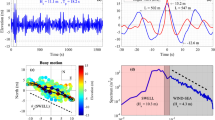Abstract
THE surface waves from forty-two selected earthquakes, recorded at Harvard during the period 1934–50, have been analysed. Those earthquakes were chosen which gave a good surface-wave record and which occurred ‘end-on’ to the horizontal seismometers, that is, north, south, east or west of Harvard. Under these conditions, both Love (Q) and Rayleigh (R) waves could be identified with certainty.
This is a preview of subscription content, access via your institution
Access options
Subscribe to this journal
Receive 51 print issues and online access
$199.00 per year
only $3.90 per issue
Buy this article
- Purchase on Springer Link
- Instant access to full article PDF
Prices may be subject to local taxes which are calculated during checkout
Similar content being viewed by others
References
Oliphant, C. W., thesis for doctorate, Harvard University (1948).
Blumberg, R. K., thesis for doctorate, Harvard University (1948).
Wood, F. W., thesis for doctorate, Harvard University (1951).
Author information
Authors and Affiliations
Rights and permissions
About this article
Cite this article
WOOD, F. A New Type of Surface Wave from Earthquakes. Nature 169, 368–369 (1952). https://doi.org/10.1038/169368a0
Issue Date:
DOI: https://doi.org/10.1038/169368a0
Comments
By submitting a comment you agree to abide by our Terms and Community Guidelines. If you find something abusive or that does not comply with our terms or guidelines please flag it as inappropriate.



